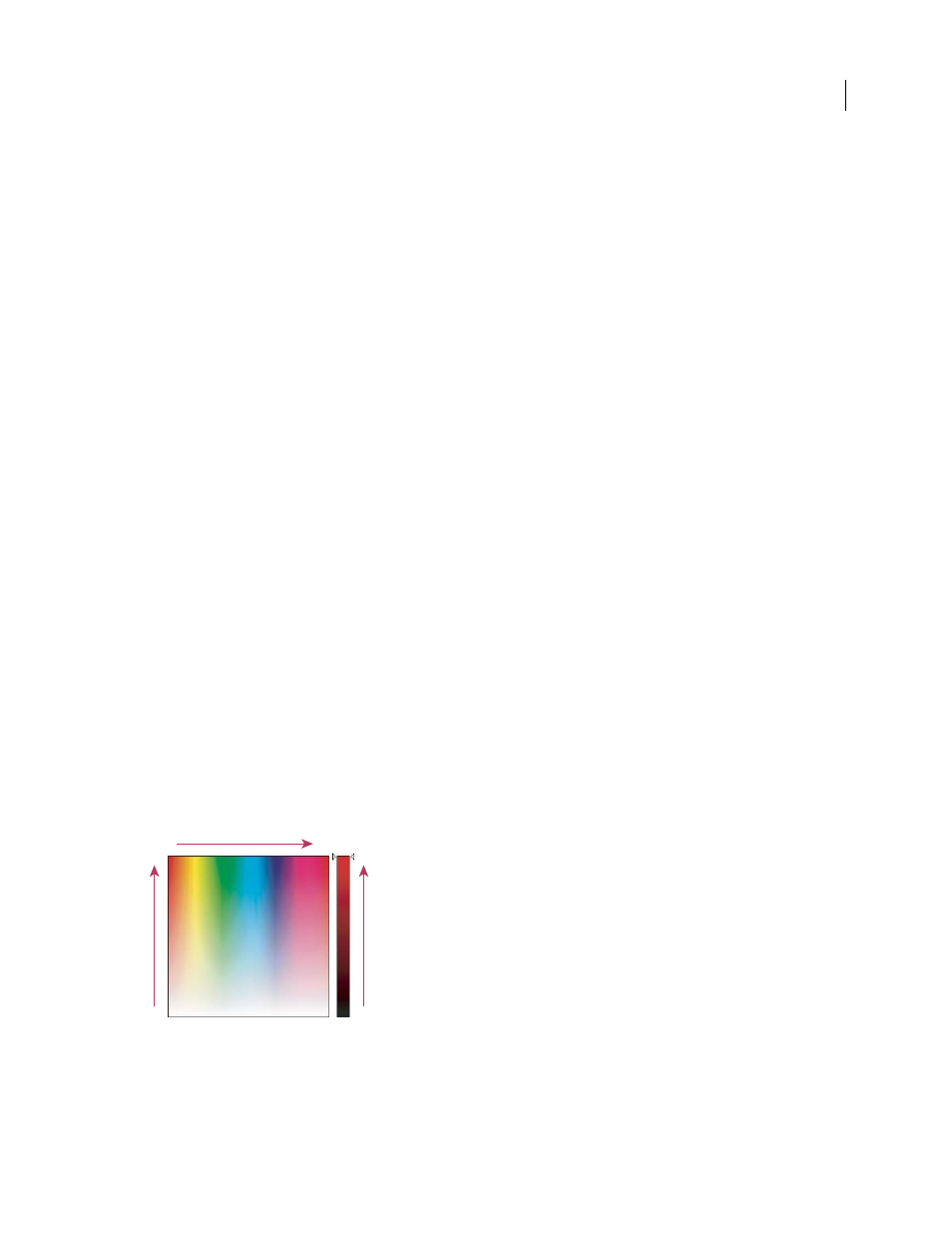Adjusting color hue, saturation, and brightness – Adobe Photoshop CS3 User Manual
Page 116

PHOTOSHOP CS3
User Guide
109
A color space is a variant of a color model and has a specific gamut (range) of colors. For example, within the RGB
color model are a number of color spaces: Adobe RGB, sRGB, ProPhoto RGB, and so on.
Each device, like your monitor or printer, has its own color space and can only reproduce colors in its gamut. When
an image moves from one device to another, image colors may change because each device interprets the RGB or
CMYK values according to its own color space. You can use color management when moving images to ensure that
most colors are the same or similar enough so they appear consistent. See “Why colors sometimes don’t match” on
page 128.
In Photoshop, a document’s color mode determines which color method is used to display and print the image you’re
working on. Photoshop bases its color modes on the color models that are useful for images used in publishing. You
can choose from RGB (Red, Green, Blue), CMYK (Cyan, Magenta, Yellow, Black), Lab Color (based on CIE L* a* b*),
and Grayscale. Photoshop also includes modes for specialized color output such as Indexed Color and Duotone.
Color modes determine the number of colors, the number of channels, and the file size of an image. Choosing a color
mode also determines which tools and file formats are available.
When you work with the colors in an image, you are adjusting numerical values in the file. It’s easy to think of a
number as a color, but these numerical values are not absolute colors in themselves—they only have a color meaning
within the color space of the device that is producing the color.
See also
Adjusting color hue, saturation, and brightness
Based on the human perception of color, the HSB model describes three fundamental characteristics of color:
Hue
Color reflected from or transmitted through an object. It is measured as a location on the standard color wheel,
expressed as a degree between 0˚ and 360˚. In common use, hue is identified by the name of the color, such as red,
orange, or green.
Saturation
Strength or purity of the color (sometimes called chroma). Saturation represents the amount of gray in
proportion to the hue, measured as a percentage from 0% (gray) to 100% (fully saturated). On the standard color
wheel, saturation increases from the center to the edge.
Brightness
Relative lightness or darkness of the color, usually measured as a percentage from 0% (black) to 100%
(white).
HSB color model
H. Hue S. Saturation B. Brightness
0
100
0
360
0
100
H
S
B
